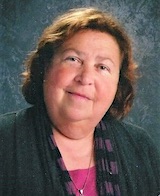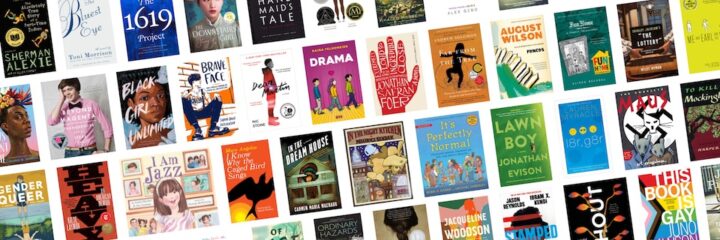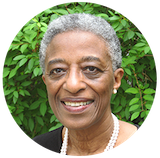Pushing Back on Book Banning and Censorship
If there’s ever been a time when Banned Books Week needs to be “Banned Books Month” that time is now. With that thought in mind, we’re publishing this post by Lynne Dorfman and her colleagues a few days after the official week ends. Consider it an extension.
By Lynne Dorfman, Aileen Hower and Frank Murphy
Banning and challenging books has been around for almost as long as books have existed.
When we look back and see that The Holy Bible has been one of the most banned books ever (and even in modern times), it should make all of us pause and reflect.
Likewise, seeing books like The Diary of a Young Girl by Anne Frank, I Know Why the Caged Bird Sings by Maya Angelou, A Splash of Red: The Life and Art of Horace Pippin by Jen Bryant, The Snowy Day by Ezra Jack Keats, and Goodnight Moon by Margaret Wise Brown all being banned and challenged demonstrates how far these machinations have spiraled out of control.
Censorship is neither a new concept nor a well-defined ethical principle applied with specific criteria. To quote another banned writer, Aristotle, we should “seek first to understand, then be understood.” That’s our goal in this article – to share some of our understandings about the freedom to read.
What Do We Mean by “Book Banning”?
Book banning is a form of censorship. It occurs when private individuals, government officials, or organizations remove books from public and school libraries, school reading lists, or bookstore shelves because interest groups object to their content.
Book banning in the Western World is usually associated with three activators – morality, religion, and politics. The objections often include offensive language, sexual activity, or gender identity and (especially in the current debate) ideas or themes that make readers uncomfortable or ashamed.
Often, parents and school board members who advocate a ban of certain books from school and classroom libraries as well as use in the curriculum complain that the book in question contains graphic violence, expresses disrespect for parents and family, is sexually explicit, praises and promotes “evil” such as witchcraft and occult practices, lacks literary merit, is unsuitable for a particular age group, or includes offensive language.
According to ALA (American Library Association) a challenge is an attempt to remove or restrict materials based upon the objections of a person or group. A banning is the removal of those materials.
Challenges do not simply involve a person raising a concern or expressing a point of view; rather, they are an attempt to actually remove material from the curriculum or library, thereby preventing its access within the learning environment. As such, they are a threat to freedom of speech and choice.
Bans on Young Adult and Children’s Literature
Book banning is the most widespread form of censorship in the United States, and recently children’s literature has taken center stage. Supporters for banning a book or certain books are afraid that children will be swayed by its contents, which they regard as potentially dangerous.
They fear that these publications will present ideas, and raise questions or incite critical inquiry among children that parents, political groups, or religious organizations are not ready to address or that they find inappropriate.
In July 2022, book banning in the U.S. hit its highest level in 40 years. Books about race, gender, diversity, and inclusion are being targeted and removed from schools and libraries in every state.
Research by PEN America has found that in 2022 “state legislators are introducing – and in some cases passing – educational gag orders to censor teachers, proposals to track and monitor teachers, and mechanisms to facilitate book banning in school districts. At the same time, the scale and force of book banning in local communities is escalating dramatically.” (Source)
A selection of most-challenged books featured at PEN America
The Dilemma Schools and Communities Face
Censorship violates the First Amendment right to freedom of speech, but some limitations are constitutionally permissible. The courts have told public officials at all levels that they may take into account community standards when deciding whether materials are obscene or pornographic and thus subject to censor.
The ALA promotes the freedom to choose and the freedom to express one’s opinions, even if that opinion might be considered unorthodox or unpopular, and stresses the importance of ensuring the availability of those viewpoints to all who wish to read them.
Can we find a middle ground in which educators, librarians, parents, students, school board members, and communities at large can agree?
It is important to respect that different families have the right to raise their children in different ways. Balancing parental rights with the rights of the student isn’t simple. Age is certainly a factor. If a parent does not want their child to read a particular text because they don’t believe they are ready for mature content, they can have a conversation with their student’s teacher to learn about other texts that address the same theme but potentially with younger characters or less vivid descriptions.
Constructive conversation should be the first step – not blanket censorship. Book banning and censorship actually remove teacher and parent judgment and decision-making from the equation and force everyone to comply with a single point of view.
Windows and Mirrors for Students
It’s also important to realize that teachers work exceptionally hard to choose texts to use in their classrooms. Many agree with Dr. Rudine Sims Bishop (1990) that books have an important role to serve as “windows and mirrors” for students.
A mirror book allows a student to see themselves in a text. Many BIPOC children have shared that they have seen few if any individuals from their cultural or racial background in texts and reading materials used in their schools.
A window book allows students to learn about other time periods, cultures, practices, and even beliefs. These types of books broaden a student’s background knowledge, vocabulary, and critical thinking skills.
What some parents seem afraid of is when these types of mirror or window books become readily available in schools or curricula, they will disparage their own child’s race, culture, or beliefs. Sometimes, parents are simply unaware of the race, culture, or beliefs of others, and are fearful of what is unfamiliar.
Simply put, books that fit Dr. Bishop’s description are windows to other experiences, written by authors who are sharing authentically and personally, without intent to disparage or humiliate but to expand understanding. Censorship of these windows and mirrors denies children of all cultures, races and dispositions the chance to understand others different from themselves and to develop the empathy and insight that fuels a free and fair democratic society.
So What Specifically Is Being Censored?
When Harry Potter and the Sorcerer’s Stone was published in the United States in 1998, it was immediately challenged, and J. K. Rowling’s books continued to be banned and restricted into the new millennium where the series topped the most frequently challenged list for 2000-2009.
The books were challenged for many reasons including glorifying witchcraft, promoting the occult, hate, lack of respect, sheer evil, leading children to hatred and rebellion, confusing children and leading them astray. Libraries and intellectual freedom fighters fought censorship attempts and eventually overcame them.
But as historian Elizabeth Schafer observed in 1999, “Book banning is a familiar foe of American education and peaks during cycles of political and cultural conservatism. ‘Censorship reflects a society’s lack of confidence in itself,’ United States Supreme Court Justice Potter Stewart remarked.” (Source)
In 2021 the ALA Office for Intellectual Freedom tracked 729 challenges to library, school, and university materials and services. Of the 1597 books that were targeted, these are among the most challenged. (Visit the ALA banned books page for more lists.)
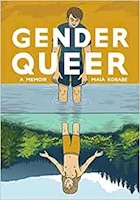
Reasons: Banned, challenged, and restricted for LGBTQIA+ content, and because it was considered to have sexually explicit images.
All Boys Aren’t Blue by George M. Johnson
Reasons: Banned and challenged for LGBTQIA+ content, profanity, and because it was considered to be sexually explicit.
The Hate U Give by Angie Thomas
Reasons: Banned and challenged for profanity, violence, and because it was thought to promote an anti-police message and indoctrination of a social agenda.
Me and Earl and the Dying Girl by Jesse Andrews
Reasons: Banned and challenged because it was considered sexually explicit and degrading to women.
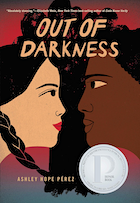
Reasons: Banned, challenged, and restricted for depictions of abuse and because it was considered to be sexually explicit.
The Bluest Eye by Toni Morrison
Reasons: Banned and challenged because it depicts child sexual abuse and was considered sexually explicit.
George by Alex Gino
Reasons: Challenged, banned, and restricted for LGBTQIA+ content, conflicting with a religious viewpoint, and not reflecting “the values of our community.”
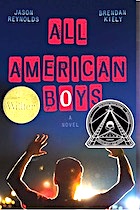
Reasons: Banned and challenged for profanity, drug use, and alcoholism, and because it was thought to promote anti-police views, contain divisive topics, and be “too much of a sensitive matter right now.”
Speak by Laurie Halse Anderson
Reasons: Banned, challenged, and restricted because it was thought to contain a political viewpoint and it was claimed to be biased against male students, and for the novel’s inclusion of rape and profanity.
Something Happened in Our Town: A Child’s Story About Racial Injustice by Marianne Celano, Marietta Collins, and Ann Hazzard, illustrated by Jennifer Zivoin
Reasons: Challenged for “divisive language” and because it was thought to promote anti-police views.
Why Do Authors Write and Teachers Share Controversial Books?
Today’s climate is politically charged. With an increase in electronic communication and a decrease in personal connections, intent can be misconstrued. Authors of children’s and young adult books write to share their story or a story akin to something that has moved them personally. These books are written to share an experience in hopes that others can feel seen and heard through reading a similar experience, or gain empathy by reading about an experience different than one’s own.
Teachers are not trying to “indoctrinate” students. They are working tirelessly to help expand their worldview and educate engaged, creative, thoughtful young people who will carry those traits into adulthood. This, it could be argued, should be everyone’s “agenda.”
When a teacher chooses a book to use with students, it’s because they are looking at the students in front of them and want each one to feel a connection to a character, an author, an illustrator, or a story’s message.
Quite often, the authors, illustrators or characters have inspired the teacher or taught them something that helped them become a better version of themselves. Maybe they rekindled a treasured memory thanks to the experience of reading the book. Frequently, teachers want to share the message of the text with students to help advance learning in the classroom.
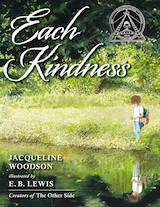
Why Does Book Banning and Censorship Matter?
In closing, why should we care about censorship, challenged books, banned books, the First Amendment, and our freedom of speech? Because the opposite of censorship is intellectual freedom.
In order for our country and society to function properly, we must have an informed populace. We must be able to think about and discuss every issue from every possible perspective. Widespread censorship prevents us from doing that. Meaningful community dialogue guards against such censorship by surfacing and addressing concerns.
Books teach us so many things. Schools and teachers have an important role in making books available, in helping students make choices, and in inviting students to talk about what they read. At the same time, all books should have an equal opportunity to be read. An op-ed by the Opinion Board of the New York Times (Sept. 10, 2022) put it this way:
“For a vocal minority to ban discussion of certain facts or topics – because they make some people uncomfortable or simply to score political points – is deeply undemocratic, particularly in a nation founded on a commitment to free speech and the open exchange of ideas. Free expression isn’t just a feature of democracy; it is a necessary prerequisite.”
When books are challenged, what can we do? Where do we turn? Here are some organizations that champion students’ right to read and freedom to write – and work to protect free expression:
- American Library Association
- Banned Books Week Coalition
- #FReadom Fighters
- National Coalition Against Censorship
- National Council of Teachers of English
- School Library Journal
- PENAmerica
This recent in-depth report from PEN America is an excellent resource with detailed information about challenges and bans in American school districts:
Feature image: PEN America
Lynne R. Dorfman is an independent literacy consultant, an adjunct professor for Arcadia University, and a Stenhouse author. Her newest book with Brenda Krupp, Welcome to Reading Workshop, will be out next spring. Lynne is a co-editor for PAReads: The Journal of Keystone State Literacy Association. Lynne’s most recent book is Welcome to Writing Workshop (Stenhouse, 2019) with co-author Stacey Shubitz.
Aileen Hower is past president of Keystone State Literacy Association and assistant professor and graduate coordinator of the Masters in Education in Language and Literacy at Millersville University, as well as the graduate coordinator of the Program Specialist in ESL Certification. Currently, she serves KSLA as the ILA coordinator.
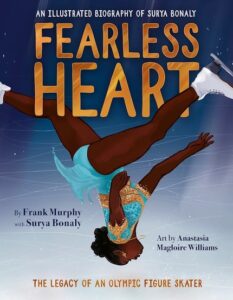
Frank has taught second, fourth, and sixth graders in Council Rock (PA) School District for 31 years. He is a history buff and has hunted down many stories for Step Into Reading chapter books (Random House) such as George Washington and the General’s Dog, Brave Clara Barton and Frederick Douglass: Voice for Justice, Voice for Freedom. Visit his website.

